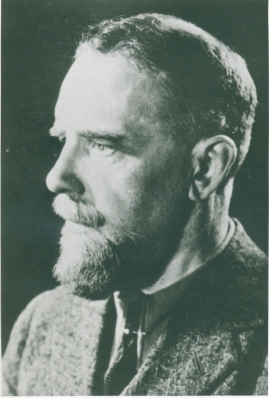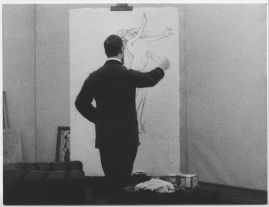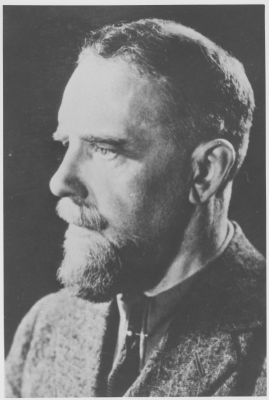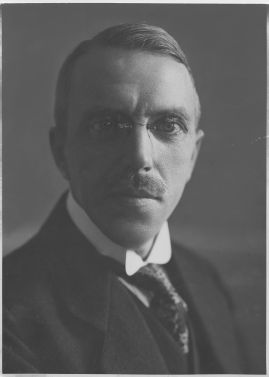Victor Bergdahl
Table of contents
- Basic facts
- Links and resources
- Biography
- Awards
- Films
- Original work
- Soundtrack listing
- Groups
Basic facts
Media (3)
| Director | |
|---|---|
| Animation | |
| Show all films |
Biography
Swedish illustrator and animator. Born as Gustaf Viktor Bergdahl in Österåker, Stockholm. Died in Enskede, Stockholm.-At the forefront of Swedish animators of the silent film era, Victor Bergdahl is justly regarded as the father Swedish film animation.After leaving school in Stockholm he did his military service on a sailing ship, an experience he described in his book "Till antipoden som beckbyxa" ('To the Antipodes as a Deckhand') published in 1906. A life-changing accident on his voyage to Australia left Bergdahl with lasting...
Biography
Swedish illustrator and animator. Born as Gustaf Viktor Bergdahl in Österåker, Stockholm. Died in Enskede, Stockholm.
-
At the forefront of Swedish animators of the silent film era, Victor Bergdahl is justly regarded as the father Swedish film animation.
After leaving school in Stockholm he did his military service on a sailing ship, an experience he described in his book "Till antipoden som beckbyxa" ('To the Antipodes as a Deckhand') published in 1906. A life-changing accident on his voyage to Australia left Bergdahl with lasting disabilities, confining him to work that only involved sitting. Back in Stockholm he developed his talent for drawing, becoming an artist, cartoonist, comic-strip artist, news feature illustrator and eventually a film animator.
Bergdahl's decision to make animated films is thought to have been inspired by various American animators and comic-strip artists, especially Winsor McCay, whose short film Little Nemo (1911), based on his own comic strip, was shown at a cinema in Stockholm.
With his short film The Magic Brew (Trolldrycken), which premiered in Stockholm in 1915, Bergdahl created the first Swedish animated film. The film explores the effects of alcohol on a bald elderly man who is smoking a cigar, with a tumbler and a bottle in front of him. Explosions occur in the smoke from his cigar from which a strange small figure emerges. Metamorphosis is at the heart of the film's pictorial imagery.
During the following year the self-taught animator Bergdahl worked on the first of three animated films on a circus theme: Cirkus Fjollinski (1916). Bergdahl's popular breakthrough came later the same year with the premiere of Captain Grogg's Wonderful Journey (Kapten Groggs underbara resa). It was the first of 13 animated films, which appeared between 1916 and 1922, about the red-nosed, pipe smoking sea captain and the cabin boy Kalle, whose adventures at sea and on land were an immediate hit with audiences. The most technically advanced film of the series, När kapten Grogg skulle porträtteras ('When Captain Grogg was to have his Portrait Painted') was made in 1917. In it, Bergdahl managed to create a believable interaction between the filmed image of himself and his animated character, achieved using techniques which included complicated double copying.
Bergdahl's Grogg films were virtually created as animated comic strips. They are characterised by elegant, flexible animation in which the movements of the sea and waves in particular were portrayed in a masterly fashion. In terms of content they displayed the typical jokes and prejudices of their day. Black people, for example, were presented in an exoticised way. Women seen as objects of temptation were also prevalent. Alcohol, explosions and erotic jokes were common elements in gags and slapstick. The films were targeted at an adult audience.
A series of animated films with the same main characters was at that time something new and unique in European animation. The films were popular in Germany and France, and also in countries such as Russia, Spain and Brazil. In the Anglo-Saxon world, however, Bergdahl was not so widely known.
As time went by Bergdahl's films disappeared from the cinema repertoire. Bergdahl went on to make commercials and educational films. For many years he worked on the film Från cell till människa ('From Cell to Human Being', Waldemar Gårdlund 1936), which is still preserved along with his commercials for the toothpaste Stomatol. On the other hand, Lilla Kalle på Göteborgsutställningen ('Little Kalle at the Gothenburg Exposition) has not so far been recovered.
Elisabeth Lysander (2011)
(translated by Derek Jones)




